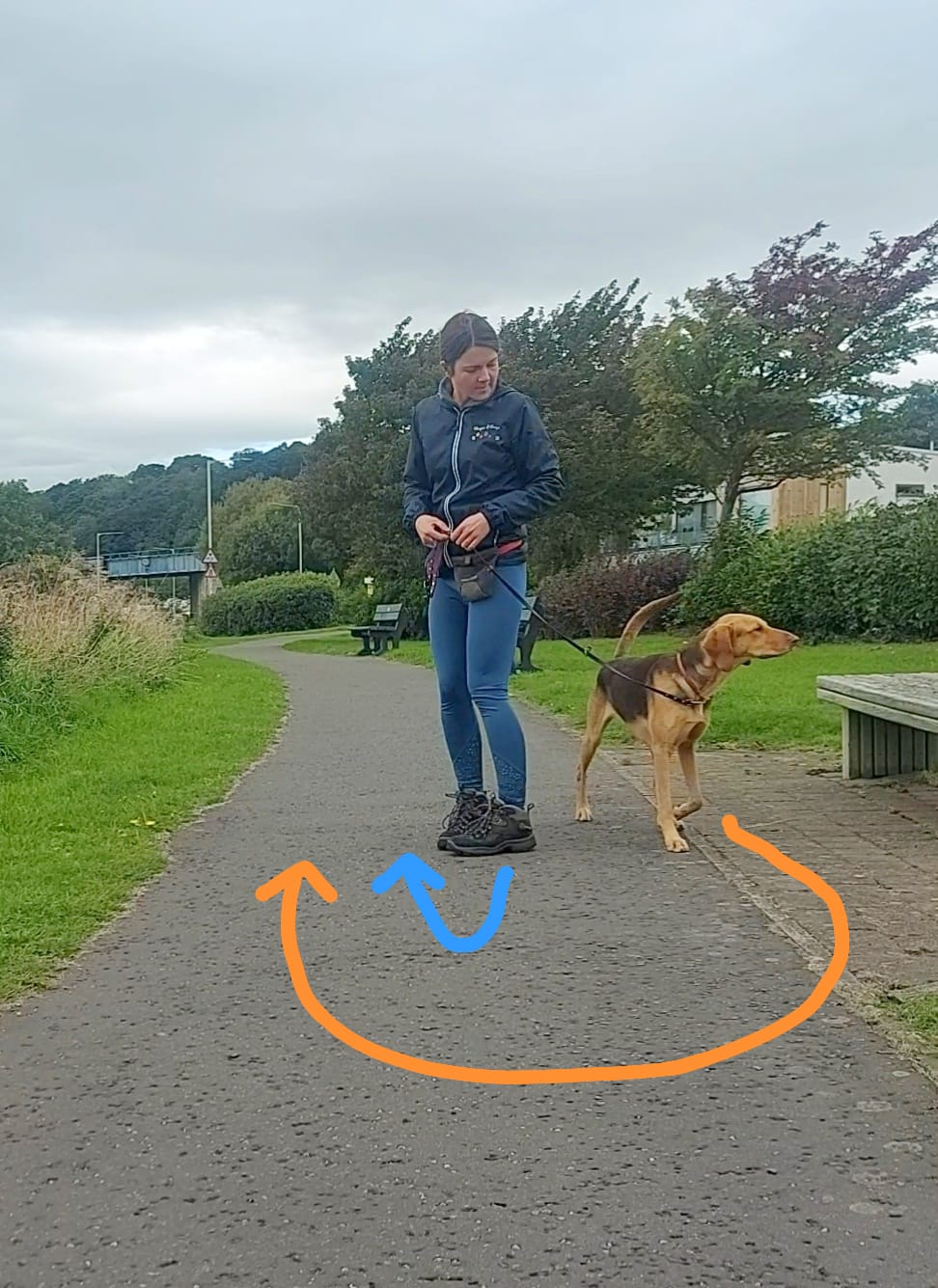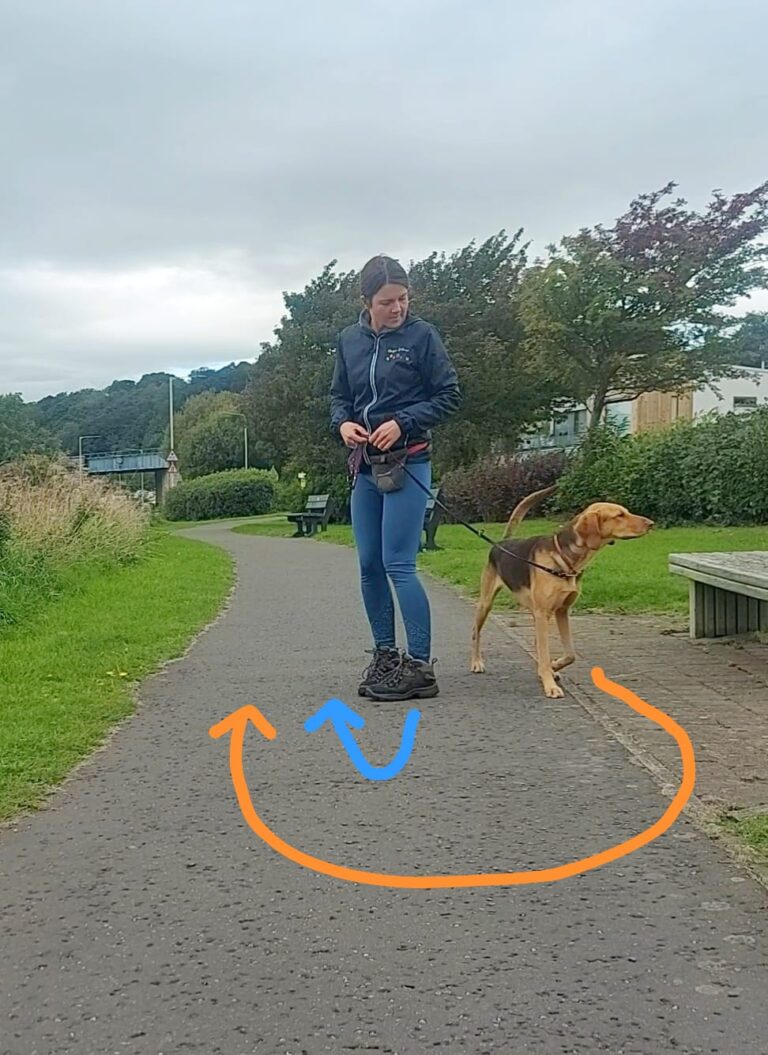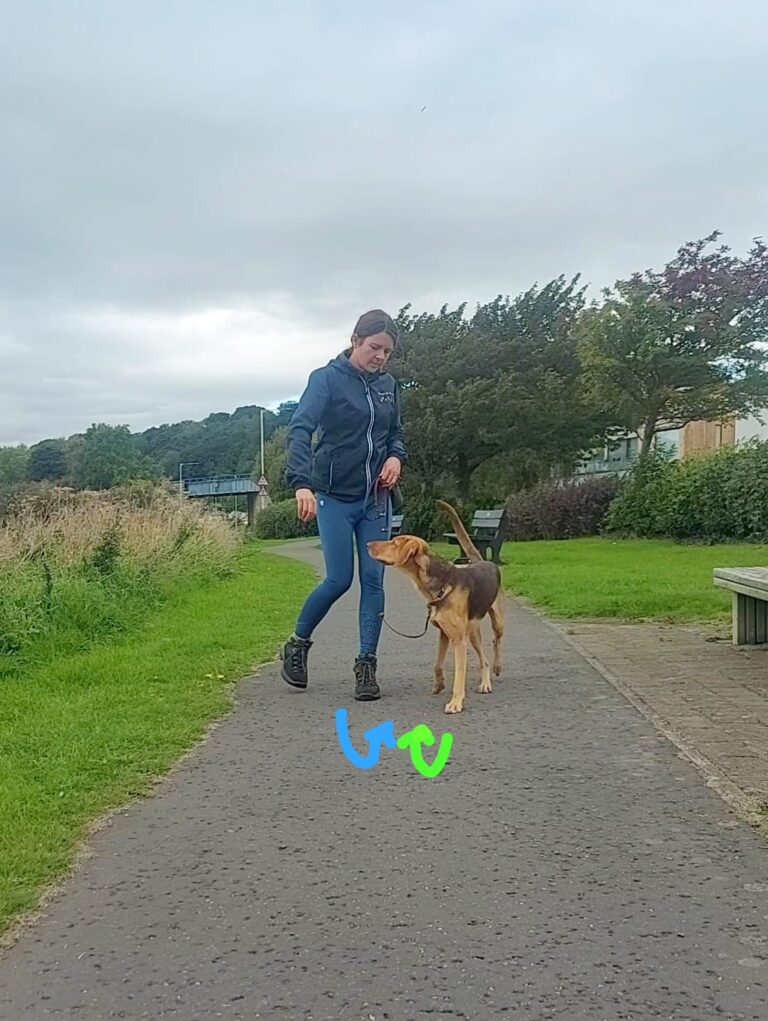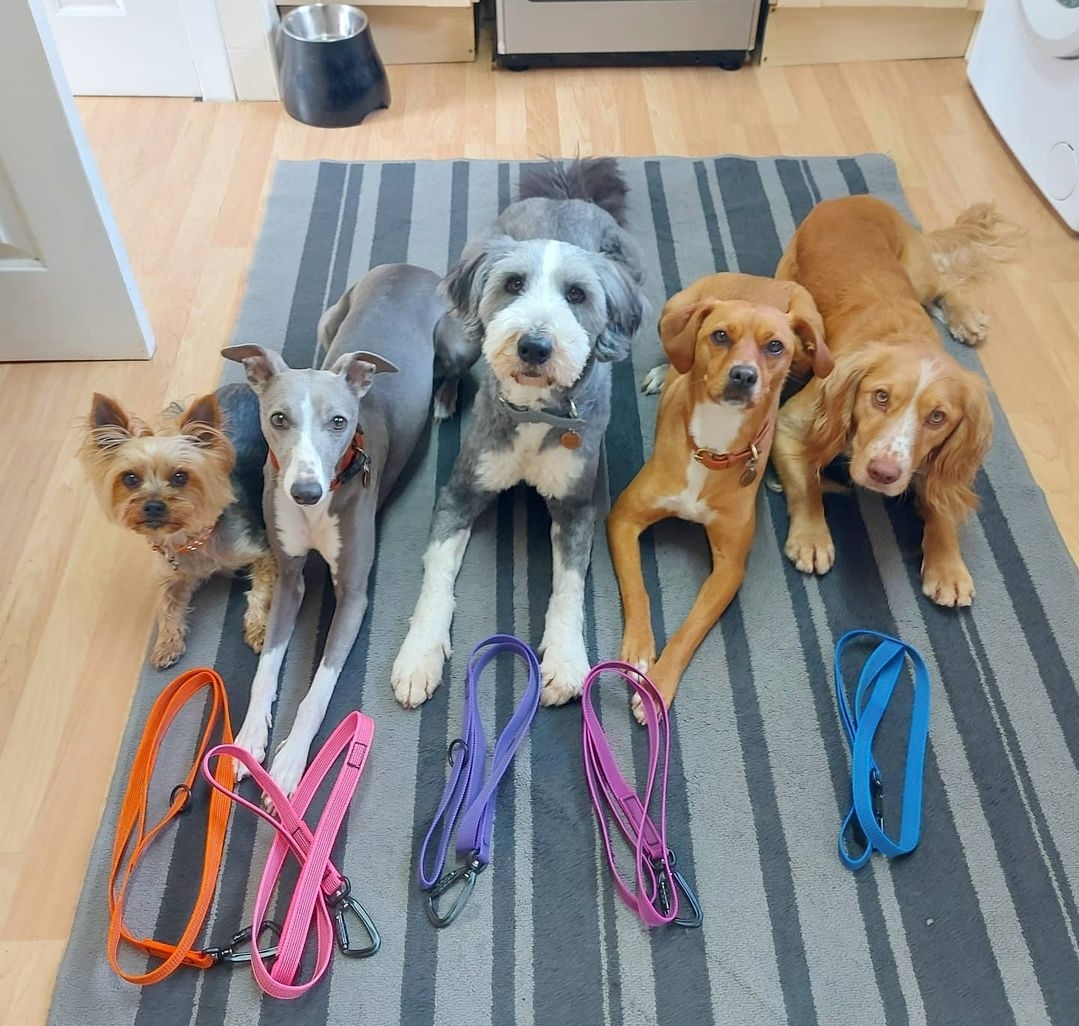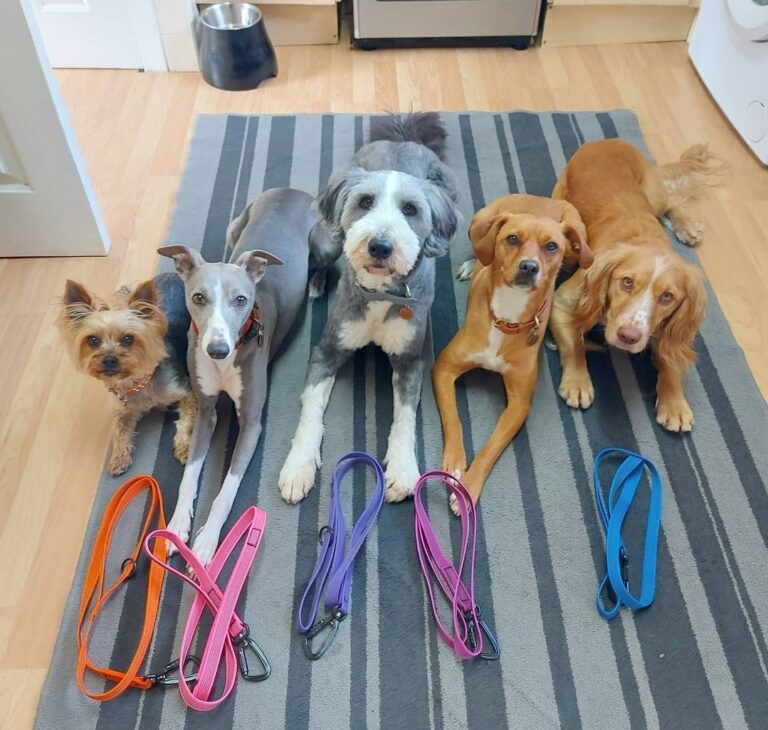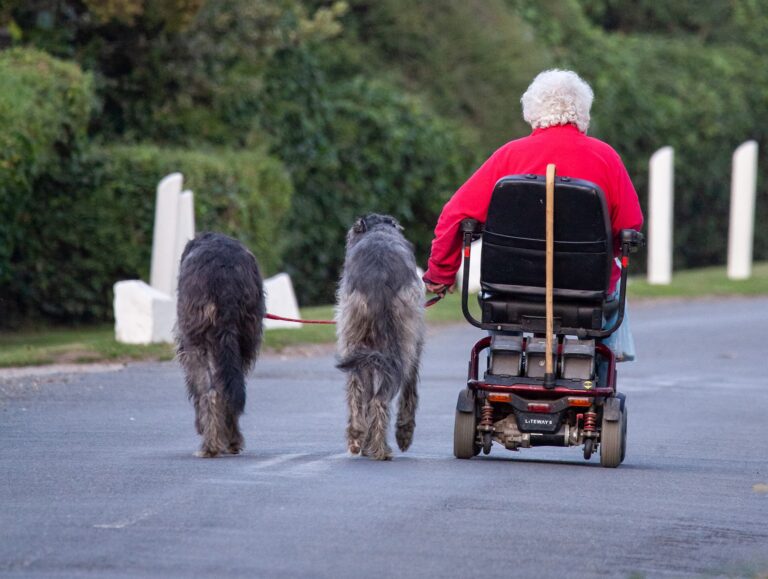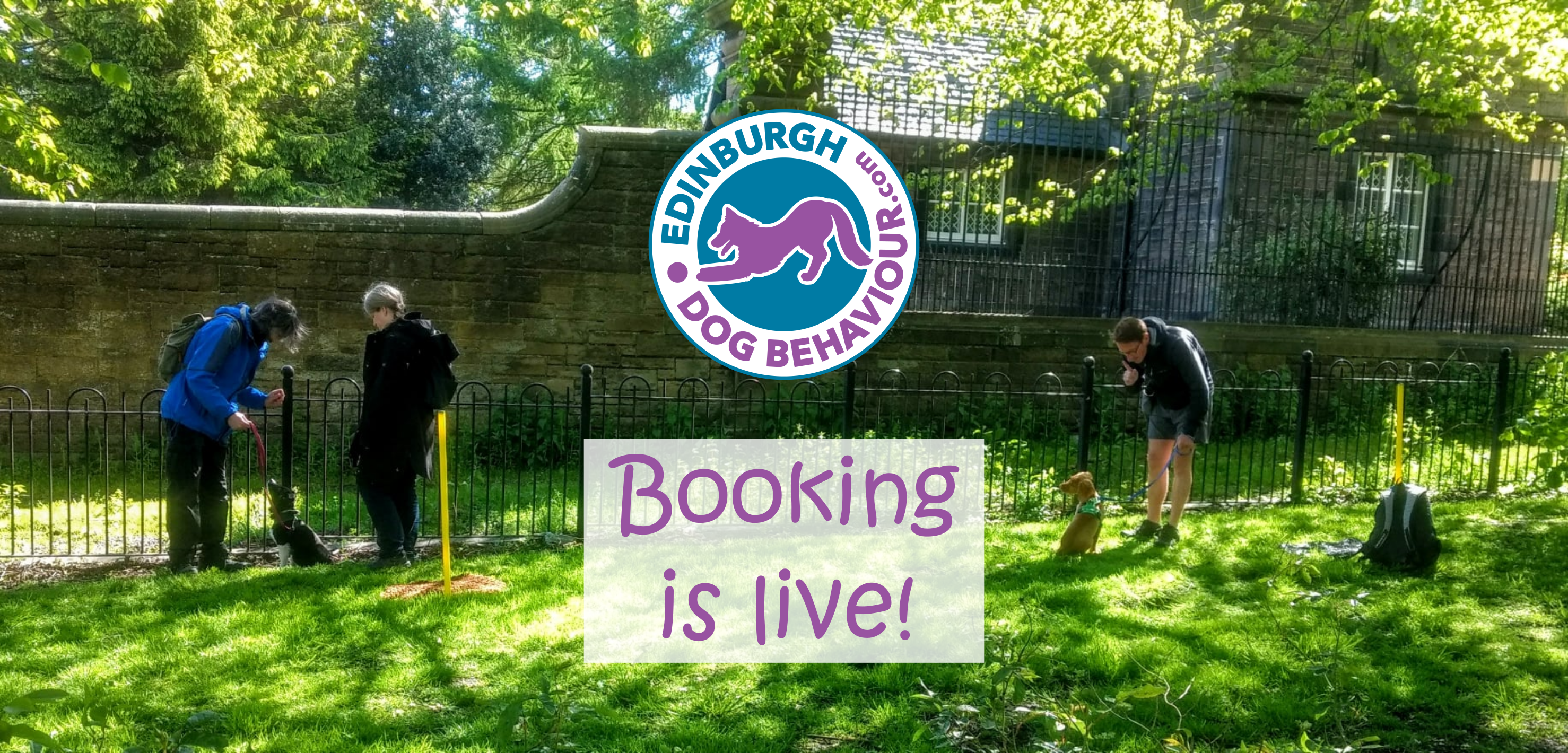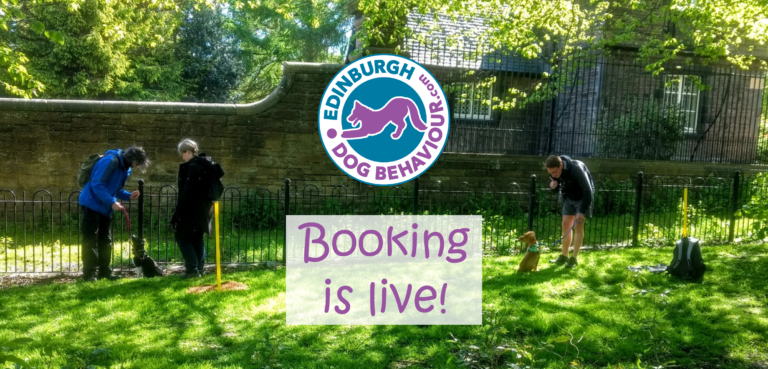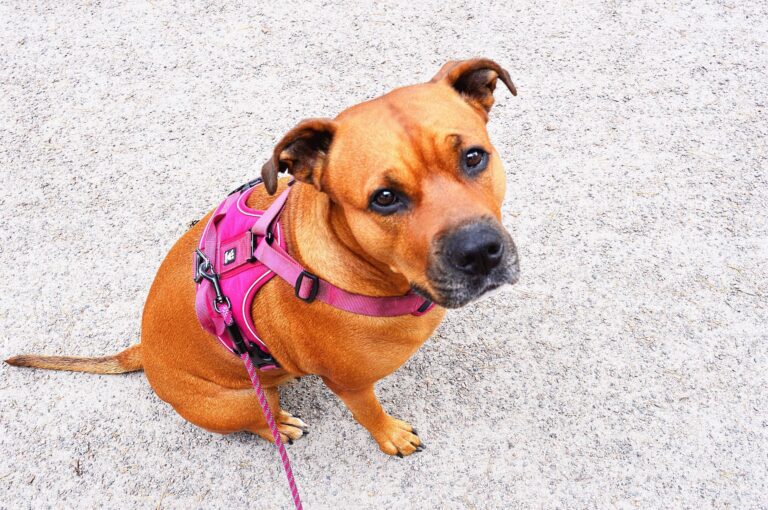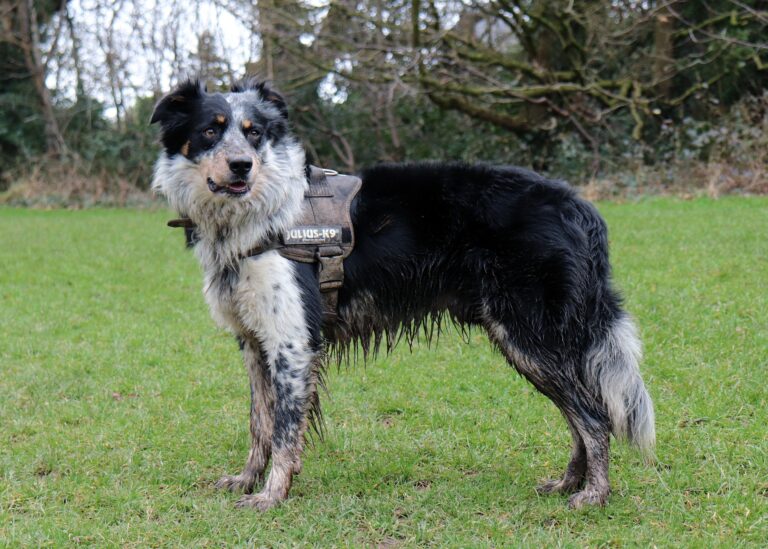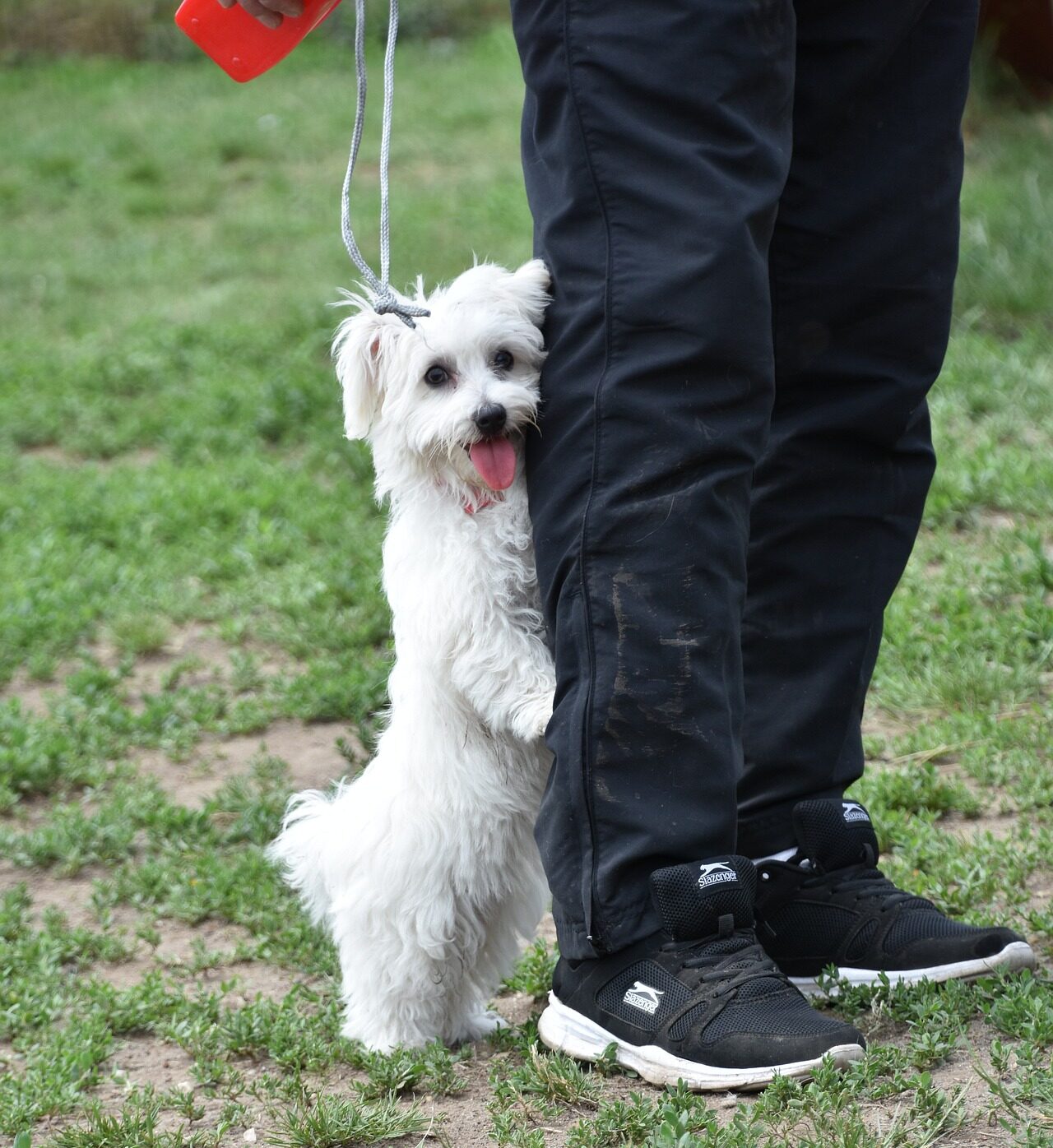
Although we specialise in helping owners fix behaviour problems such as aggression and separation anxiety, we are often asked to help solve more common issues as well! Jumping up is dog behaviour that many owners struggle to control, so here are some of our best hints and tips if you are in the process of teaching your dog not to jump at people!
Why do dogs jump on people?
Dogs are naturally agile animals who are easily able to climb or jump in order to access things they desire – from food items to toys to the faces of humans where expressions, eye contact and spoken words come from.
For smaller dogs and puppies, hands are also out of reach and generally viewed as bringers of good things – food, treats, toys, and affection.
Jumping up as such is not an inherently “bad behaviour”, but for various reasons, it can be something you’d rather your dog didn’t do.

Three ways to stop your dog jumping up
If jumping up is an undesirable behaviour to you, you have three main ways to tackle it:
- Discourage the jumping
- Encourage better alternative behaviours
- Manage the behaviour
Since dogs often thrive best when we teach and reward them for succeeding at what we want from them, a combination of all three is the most effective way to stop your dog jumping up at people. Bear in mind different situations might call for different solutions or a mix of techniques.
Discourage your dog from jumping up
You can discourage your dog from jumping up at you by turning away from your dog when they jump. This prevents them from gaining access to the reward they are seeking (your attention!). You can also immediately leave the situation or the room entirely to signal “I don’t want to interact if you behave like that”.
You could also discourage jumping by applying an unpleasant stimulus – however, this may lead to your dog associating yourself or other people with the unpleasant experience, instead of linking it to their jumping up, so we would not recommend this option.
Reward an Alternative Behaviour
Instead, consider what you would like your dog to do instead of jumping when they meet a person. Would a sit be nicer perhaps? Or is just keeping all paws on the floor sufficient?
You can encourage these better alternatives by making proximity to the floor more rewarding. Feed your dog treats on the floor by your (or other people’s) feet to make orientation downwards rather than upwards more interesting (remember, as far as dogs are concerned, usually all of the rewarding stuff from humans comes from above!).
You can also ask your dog to perform a well-known trained behaviour like sitting when they meet a person. Over time, repetition and lots of rewards, your dog will learn that if they sit during greetings, they will earn good things.
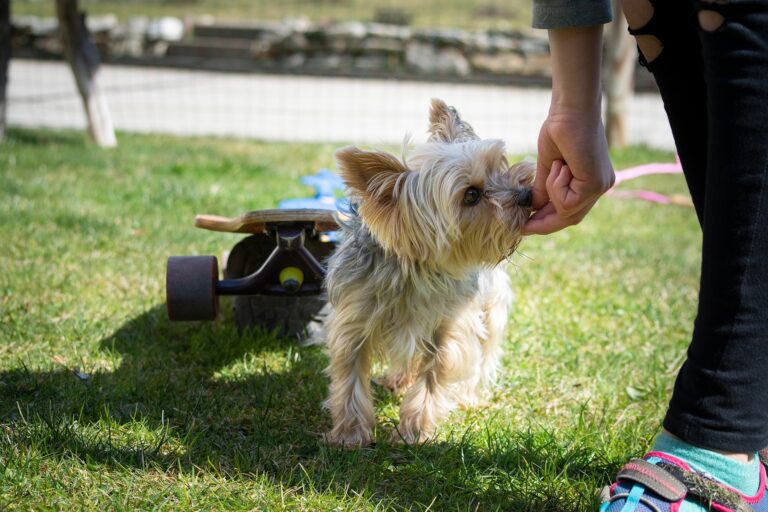
Manage your dog’s behavioural options
In addition to teaching your dog what you do want them to do, a very important part of the training process is also to manage the situation to help your dog succeed.
If your dog tends to immediately jump at people in close proximity, then rather than letting them practise this behaviour and then having to wrangle your dog off the person, how about stepping on their lead before the other person approaches so that your dog doesn’t have a chance to get their muddy paws all over your friend’s new dress? Because this management option makes it almost impossible for your dog to make the unwanted choice, it also means that your dog gets much more opportunities for being rewarded for good behaviour!
In your home, how about using a baby gate or room divider to prevent your dog from gaining reinforcement right away when guests come in? Instead, they can calm themselves down behind the barrier, and you can then reward every bit of desired behaviour without your guests being jumped on. Your guests can then move closer while your dog is still managing to remain standing or sitting politely.
If your dog gets overly excited each time a stranger wants to pet them, you can absolutely also simply ask the person not to engage with your dog in order to help with your dog’s training! Instead, ask the person if they would be happy to stand and chat to you while you reward your dog for good choices. This allows your dog to gradually learn what behaviour is expected during these situations without being overwhelmed by the excitement of meeting a new person.
This option is also great for dogs who jump to create space between them and other people. Contrary to popular belief, not all dogs jump up in excitement or because they want interaction……
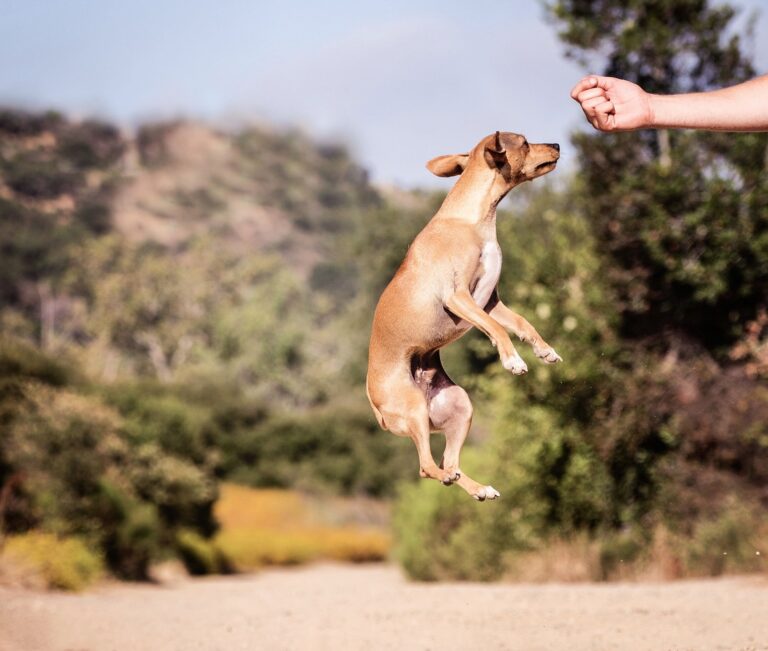
Jumping up can mean your dog is uncomfortable or anxious
While many dogs jump up in order to gain attention and affection, there are some dogs who jump up when they are uncomfortable as it typically makes the person back away and give them space. Watch your dog for signs that they might be trying to get a person to back off. For example, they may only jump when someone goes to lean over them or reach over their head, or you might notice subtle signs like tongue flicks or your dog glancing away before they jump up.
These dogs should not be put into situations where they need to begin jumping in order to feel safe, so instead, ask the person to give your dog space and then reward your dog for remaining at a distance. These dogs often welcome a safe space at home (such as a baby gated area or pen) and sometimes need to re-learn to offer a behaviour such as walking away from a person, if they have previously only experienced being “stuck” in a situation and have learned that jumping up is the only effective way to get space.
Whatever your dog’s reasons for jumping up, there is always a solution. Remember that shaping behaviour is all about creating learning opportunities. Be patient and observant with your dog whilst they learn and if things don’t go to plan – reassess and try a different set-up next time.
Author: Christina Wells

